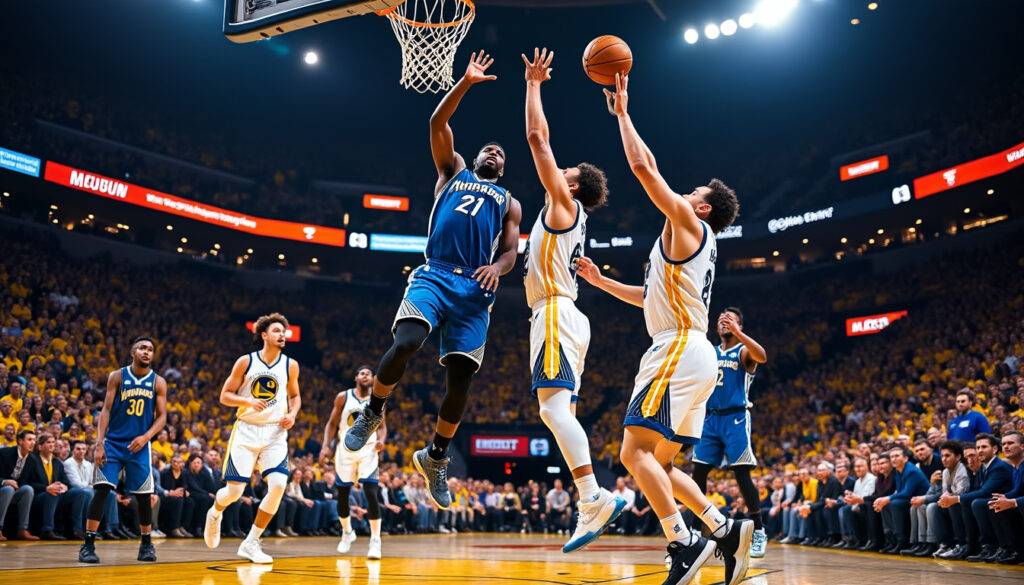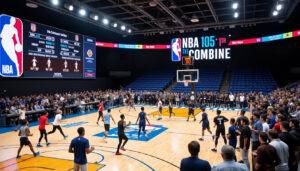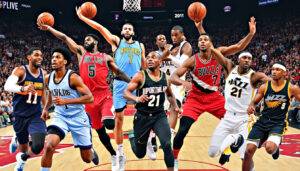Insights from Timberwolves-Warriors matchup as Minnesota makes its way back to the Western Conference Finals

The Minnesota Timberwolves have decisively claimed their spot in the Western Conference Finals after a commanding 121-110 win over the Golden State Warriors in Game 5 of their second-round NBA playoff series. This victory not only marks a significant milestone for the franchise’s postseason trajectory but also signals a shift in power dynamics within the West. The Warriors, depleted without their iconic scorer Stephen Curry, grappled to keep pace, ultimately bowing out after a series marked by what-ifs and missed opportunities. Minnesota’s combination of youthful tenacity and veteran savvy paints an intriguing picture as they prepare to face the winner of the Oklahoma City Thunder-Denver Nuggets series.
How the Timberwolves Outpaced the Warriors to Reclaim Western Conference Finals Glory
Golden State’s hopes took a severe blow early in the series when Stephen Curry sustained a left hamstring strain during the second quarter of Game 1. With their leading scorer sidelined for the remaining four games, the Warriors were unable to mount a credible offense, despite strong efforts from veterans like Jimmy Butler. Minnesota seized the opportunity, outscoring Golden State by an astonishing 46 points after Curry’s exit, powering through to a 4-1 series triumph. Their offensive efficiency was staggering, shooting nearly 63% from the field and maintaining a solid 42% from beyond the arc, which more than compensated for the team’s turnover issues.
- Stephen Curry’s injury: Changed the game’s trajectory and dynamics.
- Minnesota’s shooting: Exceptional accuracy turned tables despite turnovers.
- Veteran contributions: Julius Randle and Mike Conley stepped up decisively.
Coach Steve Kerr acknowledged the magnitude of Curry’s absence but refused to diminish Minnesota’s accomplishment. As he remarked, “Injuries are part of the playoffs,” emphasizing the Wolves’ preparedness and determination. The Minnesota bench depth and offensive versatility, equipped with reliable gear from Nike, Adidas, and Under Armour, showcased a balanced attack, securing their return to the Western Conference finals — a stage they missed since their 2024 playoff run against Dallas.
The Emergence of ‘Playoff Julius’ and Veteran Leadership
Julius Randle’s journey with Minnesota has been a rollercoaster, shadowed by a modest playoff pedigree, but his performance in this series has redefined his postseason identity. With averages surpassing 24 points, 6 rebounds, and 8 assists through the first four games, Randle’s presence was felt in both offensive orchestration and defensive tenacity. His ability to alleviate pressure from Anthony Edwards and create scoring opportunities proved vital in dominating the high-stakes moments. Donte DiVincenzo’s complementary play has solidified the team’s cohesion, disproving early skepticism following the trade that sent Karl-Anthony Towns to New York.
- Consistent scoring: Randle’s 20+ points in 8 of 10 playoff games.
- Offensive facilitator: Initiated plays and controlled tempo effectively.
- Defensive improvements: Communication and attention to detail boosted Minnesota’s solidity.
Edwards praised Randle’s elevated defense, pace pushing, and leadership — critical factors that tip the scales from potential to actual success. Their combined efforts, supported by equipment from Puma and Reebok, underline the influence of the right gear and preparation.
Jimmy Butler’s Struggles Without Curry’s Support
Jimmy Butler arrived in the postseason carrying a bruised glute and exacerbated fatigue, challenges that severely limited his impact once Curry exited. Although he averaged just over 20 points during the series, his shooting percentage and plus-minus ratings exposed his challenges in shouldering the Warriors’ offensive load alone. Without Curry stretching defenses, Butler was boxed in repeatedly, diminishing the Warriors' offensive fluidity and vision. Golden State’s ultra-competitive defense and hustle, bolstered by gear from Under Armour, could not fully salvage the team’s offensive shortcomings.
- Butler’s scoring: Respectable, yet insufficient without supporting cast efficiency.
- Plus-minus concern: Warriors performed better in his absence.
- Space constraints: No Curry meant less room for dynamics and creativity.
Despite Butler's valiant attempts to spark a fading dynasty, the Warriors fell short in a series that underscored the critical importance of health and depth in playoff success.
Mike Conley’s Vital Contribution in the Moment That Counts
Veteran point guard Mike Conley, 37 years old and in his 17th NBA season, played a pivotal role in sealing Game 5 for the Wolves. After a sluggish start marked by inefficient shooting, Conley exploded for 16 points along with four key three-pointers in the clincher. His emergence was more than just scoring; it was a reminder of his leadership, experience, and calm under pressure. Clad in professional apparel from New Era and Mitchell & Ness, Conley embodied the savvy veteran status that every contender needs when the stakes rise.
- Clutch shooting: Four critical three-pointers turned the tide.
- Leadership: Steady hand in high-pressure moments.
- Experience matters: Veteran savvy lifted the Wolves during crucial stretches.
His role highlights the value of mental toughness and execution, blending seamlessly with Minnesota’s youthful energy to forge a balanced roster.
The Stats Behind Minnesota’s Dominance Despite Golden State’s Advantages
In a stat paradox that would confound any coach, Golden State outperformed Minnesota in several traditional metrics:
- Possessions controlled
- Field goal and three-point attempts
- Rebounding edges
- Turnovers forced
Despite these advantages, the Warriors lost by 11 points, primarily due to Minnesota’s surgical shooting precision. The Wolves’ 62.8% shooting and 41.9% three-point accuracy turned the game despite 21 turnovers — their worst mark this season. This disconnect illustrates how volume stats without efficiency, especially in an era where even casual fans can track advanced metrics via NBA apps and platforms, fail to tell the whole story.
Being outfitted by industry leaders like Spalding, Gatorade, and Fanatics ensures that the Timberwolves' players are conditioned and fueled at the highest level, factors often overlooked in statistical analysis but essential in close playoff battles.
Steph Curry’s Injury: The Turning Point and What It Means Going Forward
The left hamstring strain that sidelined Curry arguably defined the series. We’ll never know if he could have returned for Game 6, but any premature comeback risked further damage, as recent NBA playoff injuries to stars like Jayson Tatum and Damian Lillard have painfully shown. The Warriors, mindful of preserving their franchise icon, wisely avoided unnecessary risks. Meanwhile, Minnesota capitalized on the absence with poise and aggressive execution.
- Injury impact: Shifted series momentum and strategic options.
- Player health priority: Prevention over pride avoided long-term consequences.
- Future implications: Curry’s rehab and return will influence Golden State's offseason moves.
This instance reaffirms how critical health and depth are in today’s NBA playoff landscape, where the cutthroat competition spares no deficit. The Wolves will now prepare to face the victor of the OKC-Denver clash, with anticipation high following Minnesota’s well-earned victory.
For a deeper breakdown of each game, stats, and analysis, check out this comprehensive playoff breakdown and our contenders assessment. For insights on the upcoming Western Conference Finals matchups involving Minnesota or Oklahoma City and Denver, visit here. To explore how Timberwolves dominated previous rounds, see this recap. Also, reflect on Curry’s injury and its ramifications in detail.

